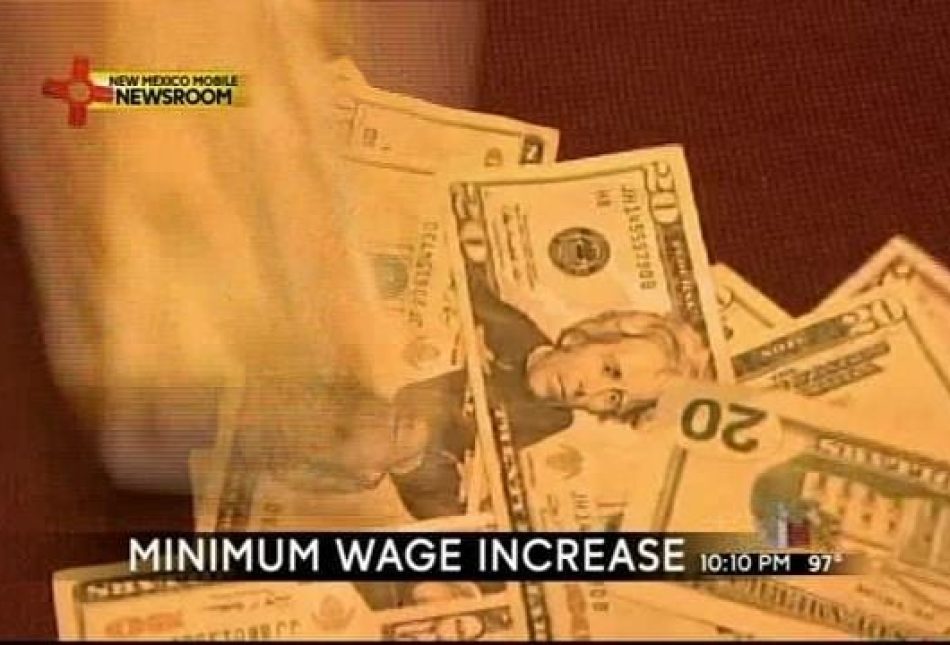Look carefully for impact of Las Cruces wage hike

![]()
This month, the Las Cruces City Council assessed the early impact of the city’s 35 percent minimum wage increase, the first phase of which took effect in January 2015. Its verdict: The wage hike has not had a negative effect on the Las Cruces economy. Proponents who led the heated 2014 fight to pass the controversial measure greeted the news as evidence that it has been a success. But a closer look at how the council staff came to its conclusion suggests that any celebrations should be put on hold.
The council’s assessment was based on municipal-level changes in sales tax receipts, property sales, and overall employment levels in 2015 versus 2014. But these metrics are too broad to be affected by the small slice of the population affected by the wage hike. (The city manager estimated that less than 1 percent of the city’s payroll comes from minimum wage earners.) These employees’ ability to impact overall consumer spending, property sales and employment levels is negligible at best.
To accurately judge the impact of Las Cruces’ minimum wage increase – or any minimum wage increase – you must start by looking at the employment conditions among industries or employees that are directly affected by them. That means, for example, looking at how the restaurant and hospitality industries are faring in an affected city or state. (In empirical studies, economists often compare data from locales with a wage hike to those without, while controlling for relevant economic conditions.)
The 2015 government data that has been released for these industries are preliminary and include the population of the entire Las Cruces metro area. For a clearer picture of the minimum wage’s impact, residents must wait for additional detail and a more robust empirical analysis. Nevertheless, the early numbers are not promising, and certainly don’t justify the City Council’s rose-colored claims that a hike has had no impact.
For example, data released by the Census Bureau show that the net number of restaurants in the Las Cruces metro area declined by 2.7 percent in 2015. The net number of hotels in the area fell by 10 percent for the year as well.
There was a 9 percent employment drop at grocery stores, another big starter wage employer, in the year. And employment at gas stations fell in 2015 for the first time since 2009, after steadily increasing in each of the prior years.
The anecdotal evidence also suggests it is too soon to say the wage hike hasn’t had a negative impact. Greg Johns, co-owner of two Daddy O’s Car Wash operations in Las Cruces, told the Sun-News the wage hike caused him to abandon plans to open a new location in the city that would have employed 30 people. Instead, Johns decided to expand in El Paso.
And Lorenzo’s restaurant on University Avenue was forced to cut three jobs, shorten hours, and limit its employees’ meal items because of the costs associated with the wage hike.
These aren’t jobs that Las Cruces can afford to lose. Young residents in the area currently face an average 23 percent unemployment rate.
Minimum wage increases of the level pursued by Las Cruces rarely — if ever — affect the broader economy. This is a straw man put forth by proponents to easily attack. The bulk of economic research concludes, however, that wage hikes do reduce job opportunities for young and less-skilled jobseekers. A recent summary of all recent minimum wage research published last year by the San Francisco Federal Reserve confirms these job losses may be greater than originally thought.
Ultimately, it is too soon to determine the true effects of the Las Cruces wage hike. The City Council even admitted this in its assessment. The fact that it still came to the rosy conclusion it did suggests a political rather than economic motive.
Gessing is president of the Rio Grande Foundation. Saltsman is research director at the Employment Policies Institute in Washington, D.C.
